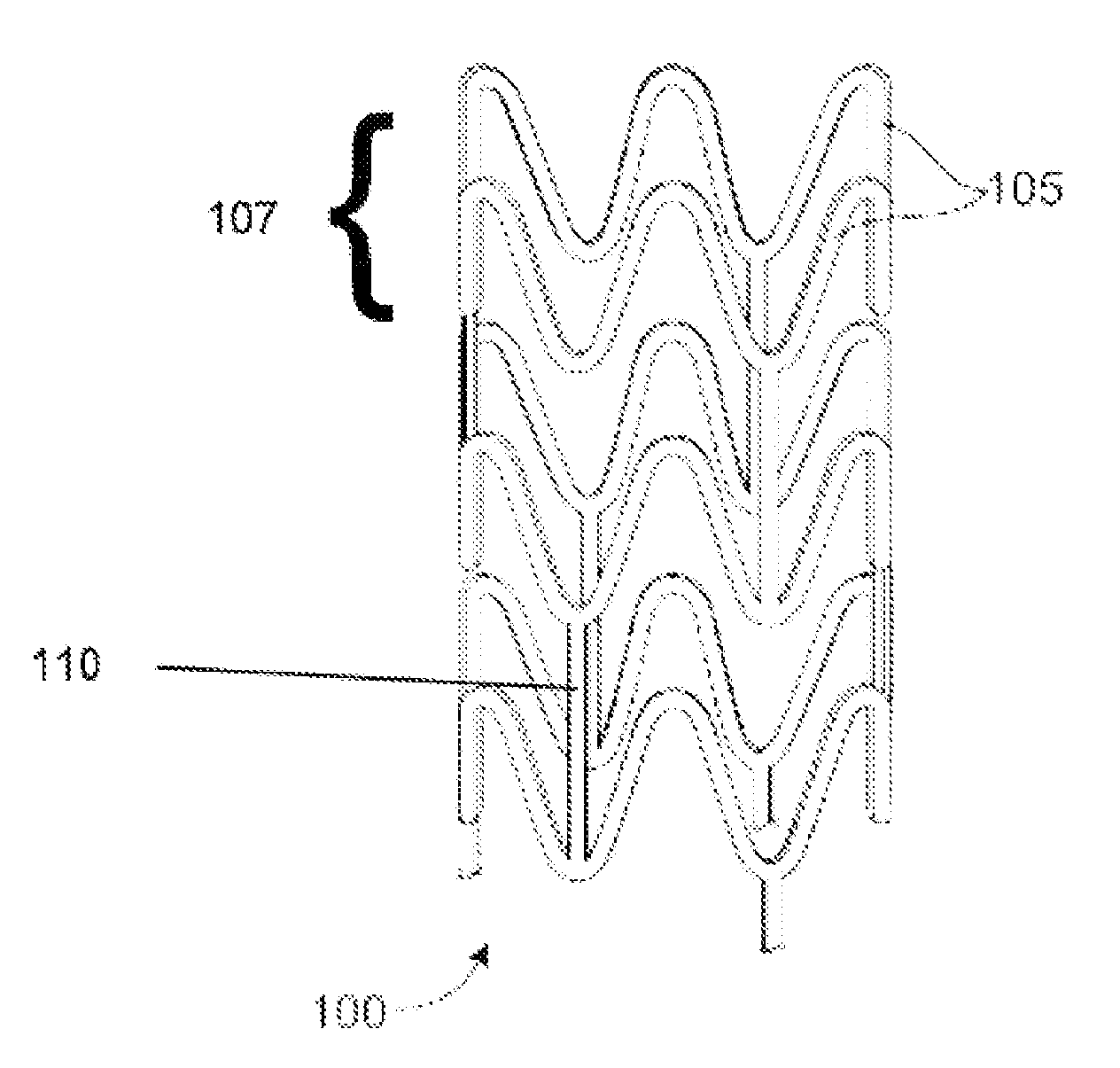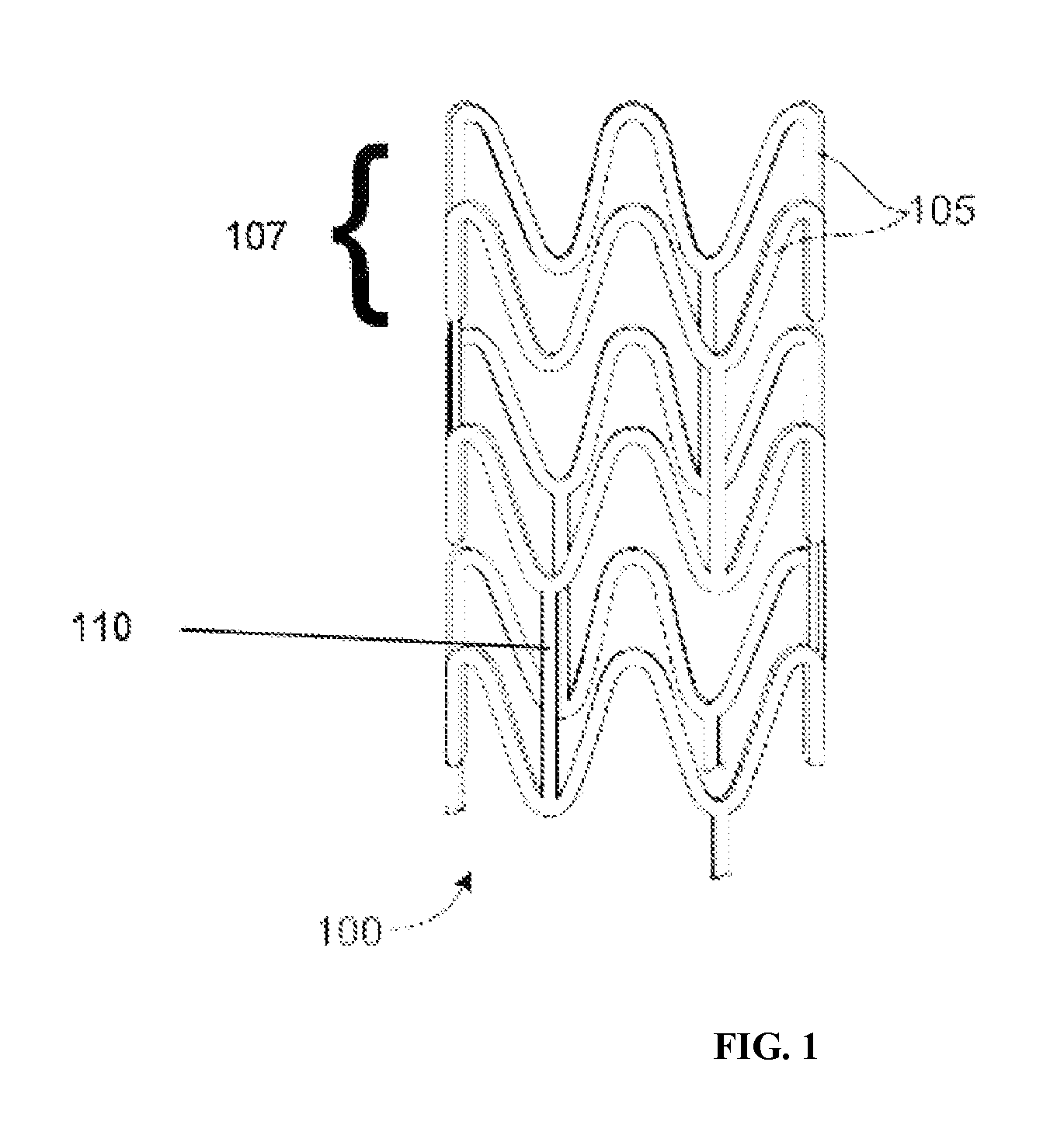Modification of bioabsorbable stent to reduce thrombogenecity
a bioabsorbable, stent technology, applied in the field of stents, can solve the problems of difficult treatment, adverse or even toxic side effects, and the significant problem of restenosis
- Summary
- Abstract
- Description
- Claims
- Application Information
AI Technical Summary
Benefits of technology
Problems solved by technology
Method used
Image
Examples
Embodiment Construction
[0025]Various embodiments of the present invention relate to a bioabsorbable stent and methods of making thereof for treatment of coronary artery disease. These embodiments include a stent scaffolding with a coating having immobilized antithrombotic agents that reduce or prevent thrombosis prior to endothelialization of the stent. The embodiments further include a stent scaffolding or its coating having immobilized endothelialization-promoting agents.
[0026]Coronary artery disease refers to a condition in which the arteries that supply blood to heart muscle become hardened and narrowed or stenotic. This is due to the buildup of cholesterol and other material, called plaque, on their inner walls. Such narrowed or stenotic portions are often referred to as lesions. Coronary artery disease includes restenosis which refers to the reoccurrence of stenosis.
[0027]A stent may include a pattern or network of interconnecting structural elements or struts. FIG. 1 depicts a view of a stent 100. ...
PUM
| Property | Measurement | Unit |
|---|---|---|
| thickness | aaaaa | aaaaa |
| thickness | aaaaa | aaaaa |
| thickness | aaaaa | aaaaa |
Abstract
Description
Claims
Application Information
 Login to View More
Login to View More - R&D
- Intellectual Property
- Life Sciences
- Materials
- Tech Scout
- Unparalleled Data Quality
- Higher Quality Content
- 60% Fewer Hallucinations
Browse by: Latest US Patents, China's latest patents, Technical Efficacy Thesaurus, Application Domain, Technology Topic, Popular Technical Reports.
© 2025 PatSnap. All rights reserved.Legal|Privacy policy|Modern Slavery Act Transparency Statement|Sitemap|About US| Contact US: help@patsnap.com



